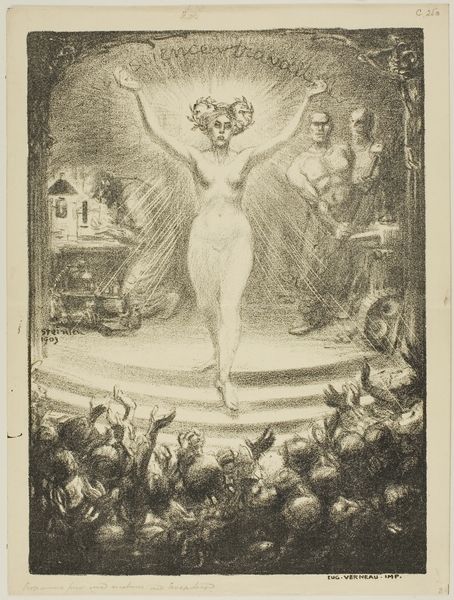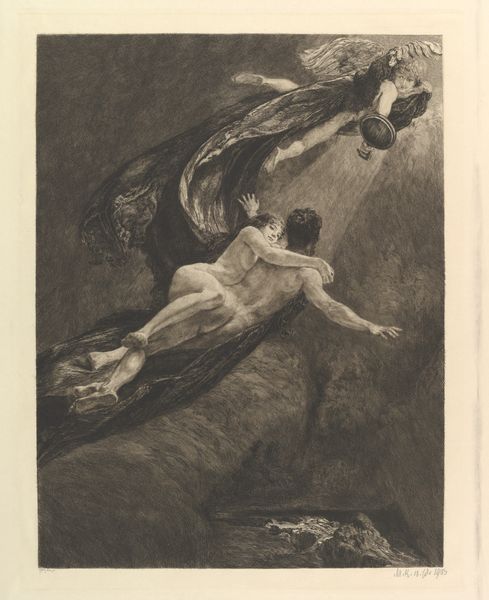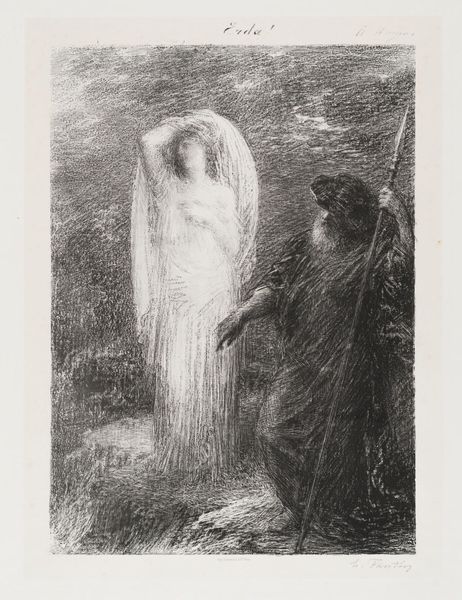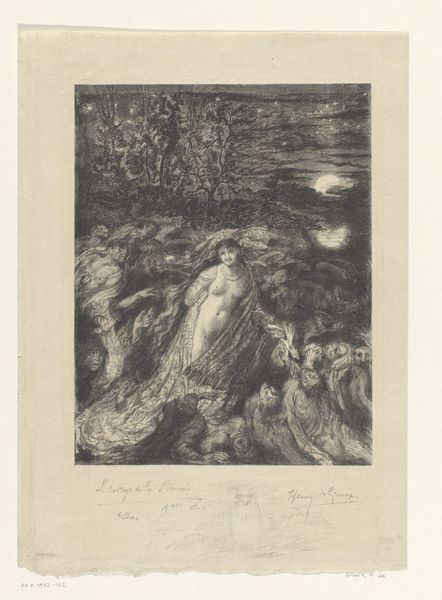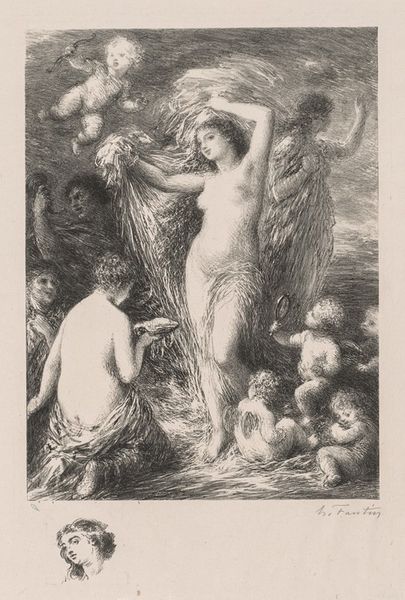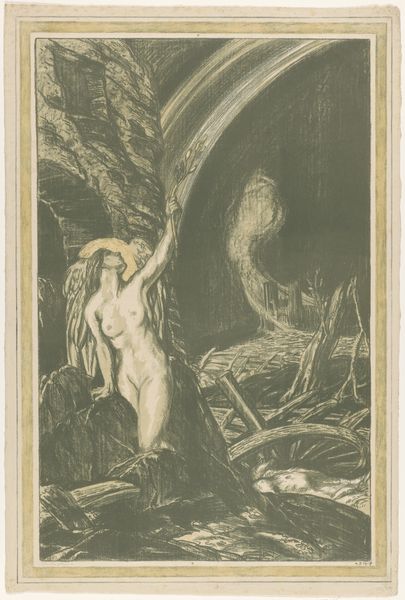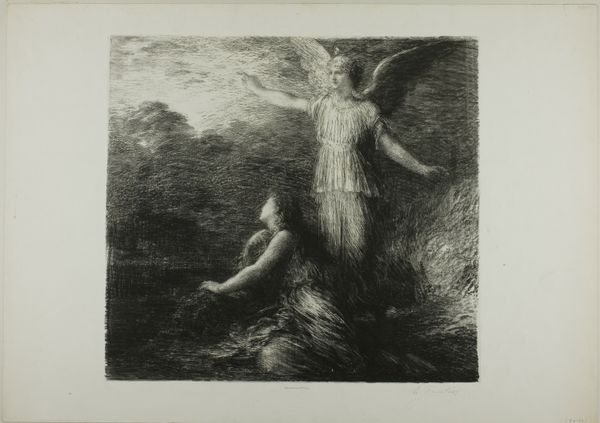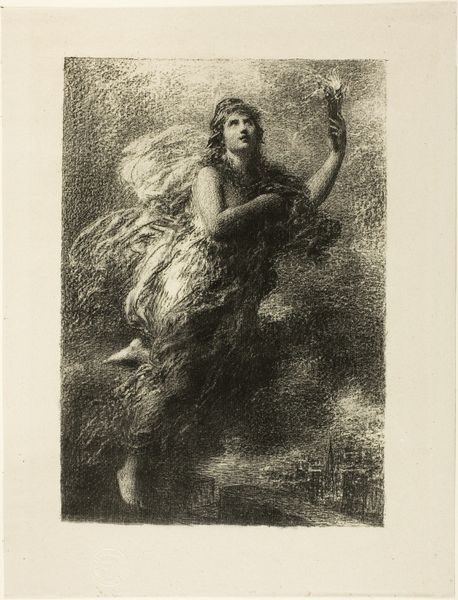
drawing, lithograph, print, paper, pencil
#
drawing
#
narrative-art
#
lithograph
# print
#
figuration
#
paper
#
pencil
#
france
#
symbolism
#
history-painting
#
nude
Dimensions: 376 × 356 mm (image); 540 × 446.5 mm (sheet)
Copyright: Public Domain
Editor: Here we have Théophile Alexandre Steinlen's "Homage to Zola," created around 1902. It's a lithograph, drawing, and print on paper. I'm immediately struck by the figure emerging from a mass of bodies... what kind of statement do you think Steinlen is making here? Curator: Steinlen's "Homage to Zola" is deeply intertwined with the political and social turmoil of early 20th-century France, especially the Dreyfus Affair, in which Zola famously intervened. Consider the historical context. Zola's "J'Accuse…!" was a watershed moment. Who does the central figure remind you of? Editor: I hadn't thought of that! I guess it could be a representation of Justice, but why are there so many figures at the bottom of the drawing? Curator: Precisely. It can be read as Justice emerging from or being supported by a sea of people – the oppressed, the working class, the victims of injustice, while representing a society emerging from conflict into some sort of harmony. Doesn’t that provide a potential insight into the function of symbolism during periods of strife? Editor: It does, especially how symbols and allegories serve a valuable tool during tumultuous times to convey sensitive sociopolitical statements without explicitly doing so. Thank you for helping me unpack all those symbolic nuances. Curator: You’re welcome. It shows how art is deeply embedded in societal complexities. It prompts us to analyze history through an intersectional lens.
Comments
No comments
Be the first to comment and join the conversation on the ultimate creative platform.

